Table of Contents
Come join us now, and enjoy playing your beloved music and browse through great scores of every level and styles!
Can’t find the songbook you’re looking for? Please, email us at: sheetmusiclibrarypdf@gmail.com We’d like to help you!
Sorabji: In the Hothouse (from Two Piano Pieces) sheet music, Noten, partitura, spartiti 楽譜

Best Sheet Music download from our Library.

Please, subscribe to our Library.
If you are already a subscriber, please, check our NEW SCORES’ page every month for new sheet music. THANK YOU!
Browse in the Library:
Or browse in the categories menus & download the Library Catalog PDF:
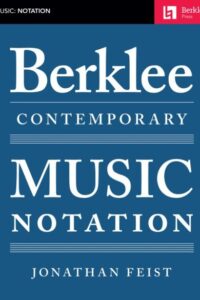
Who was Sorabji?
Kaikhosru Shapurji Sorabji: The Hermit of Modernist Maximalism
In the often-crowded pantheon of 20th-century composers, Kaikhosru Shapurji Sorabji (1892-1988) occupies a unique and enigmatic niche. A composer of staggering ambition, labyrinthine complexity, and self-imposed isolation, Sorabji crafted some of the most monumental, technically demanding, and stylistically idiosyncratic music ever conceived. His work, largely ignored during his lifetime and still challenging audiences today, represents a singular path through modernism – one defined by maximalism, intricate ornamentation, transcendental virtuosity, and a fierce, almost hermetic, independence.

Biography: A Self-Forged Identity
- Birth & Heritage: Born Leon Dudley Sorabji on August 14, 1892, in Chingford, Essex, England. His father was a Parsi engineer from India (thus the Persian-derived name Sorabji), and his mother was English-Spanish. This mixed heritage profoundly shaped his sense of identity, though he felt alienated from both cultures.
- The Name: Around 1914, he legally changed his name to Kaikhosru Shapurji Sorabji. “Kaikhosru” and “Shapurji” were Persian names chosen for their resonance and connection to ancient Persian history and Zoroastrianism, reflecting his deliberate construction of a unique persona.
- Musical Formation: Largely self-taught. He received some piano lessons in his youth but had no formal composition training. His musical education came through voracious listening, score study (especially Bach, Liszt, Busoni, Debussy, Ravel, Scriabin, Szymanowski, Medtner), and wide reading in literature, philosophy, and the occult.
- Early Career & Criticism: Worked as a music critic (under the pseudonym “S. Godfrey”) for outlets like The New Age and The New English Weekly from the 1910s to the 1930s. His critiques were famously acerbic, insightful, and often scathing, particularly targeting English musical provincialism and composers he deemed mediocre (which was most of them).
- The Recluse: Deeply disillusioned by the musical establishment and critical reception to his early performances (which were rare and often controversial), Sorabji gradually withdrew from public musical life starting in the late 1930s. After his mother’s death in 1940, he retreated almost completely to his secluded home “The Eye” in Corfe Castle, Dorset, where he lived with his companion, Reginald Norman Best, until his death. He forbade performances of his music for decades.
- The Ban Lifted: In 1976, pressured by a growing underground interest spearheaded by pianists like Yonty Solomon and Alistair Hinton (who later became his literary executor), Sorabji reluctantly lifted the ban on performances, provided he approved the performer.
- Death: Sorabji died on October 15, 1988, in Winfrith Newburgh, Dorset, leaving behind a colossal legacy of unpublished manuscripts.
Works: Monuments of Sound

Sorabji’s output is vast and overwhelmingly dominated by solo piano music, though he also composed orchestral works, chamber music, organ symphonies, and songs. His works are renowned for their extreme length, density, and technical difficulty, pushing the boundaries of playability.
- Key Masterpieces:
- Opus Clavicembalisticum (1930): His most famous (or infamous) work. A colossal 4+ hour piano epic in 12 movements (including fugues, passacaglias, toccatas, cadenzas), often considered one of the most challenging solo piano works ever written. A summit of contrapuntal complexity and virtuosic display.
- Symphonic Variations for Piano (1935-37): Another monumental work, exploring vast variation forms over an extended duration.
- Sequentia Cyclica super “Dies iræ” ex Missa pro Defunctis (1948-49): A massive cycle of 27 variations on the “Dies Irae” chant, demonstrating his intricate contrapuntal and transformative skills.
- 100 Transcendental Studies (1940-44): True to their name, these studies explore extreme technical and expressive demands far beyond those of Liszt or Chopin.
- Symphonies for Solo Piano: Several exist, including his Symphony No. 2 (“Jāmī”), blending orchestral textures and scope onto the piano.
- Gulistān – Nocturne for Piano (1940): A prime example of his lush, perfumed, and incredibly intricate “Persian”-inspired style.
- Concerti: He wrote several for solo piano and orchestra (e.g., Concerto per suonare da me solo e senza orchestra, per divertirsi), which are symphonic in scale and require superhuman virtuosity.
- Symphonies for Organ: Vast, complex works exploring the sonic possibilities of the instrument.
Analysis of Style: A Universe of Complexity
Sorabji’s style is instantly recognizable yet difficult to categorize. It synthesizes diverse elements into a unique and overwhelming whole:
- Maximalism: This is the defining characteristic. Sorabji embraced extremes:
- Length: Works lasting several hours are common.
- Density: Highly polyphonic textures, often with multiple independent melodic lines woven together in complex counterpoint (influenced by Bach, Busoni).
- Virtuosity: Demands transcendental technique – cascades of notes, complex polyrhythms, wide leaps, immense power, and extreme delicacy. He wrote as if the pianist had four hands.
- Ornamentation: Baroque-like ornamentation (trills, mordents, turns, grace notes) is ubiquitous, often layered and integral to the texture, creating shimmering, kaleidoscopic surfaces (influenced by Scriabin, Szymanowski, Middle Eastern/Persian music).
- Dynamic Range: From barely audible whispers to thunderous, percussive climaxes.
- Harmony: A complex fusion:
- Rooted in late-Romantic chromaticism (Scriabin, Szymanowski, early Schoenberg).
- Freely employed dissonance, clusters, and intricate chord structures.
- Often retained a sense of tonal centers or polarity, even amidst dense chromaticism (unlike strict atonality).
- Incorporated modal inflections, sometimes evoking Persian or Spanish flavors.
- Rhythm: Highly complex and fluid:
- Frequent use of polyrhythms (multiple simultaneous rhythms), cross-rhythms, and nested tuplets (triplets within quintuplets, etc.).
- Tempo often fluctuates wildly, requiring immense control.
- A sense of improvisatory freedom within highly structured forms.
- Form: Often large-scale, complex, and idiosyncratic:
- Favored variations (passacaglias, chaconnes), fugues, toccatas, and intricate multi-movement structures (like the Opus Clavicembalisticum).
- Forms were often expansive and cumulative, building through layered repetition and intensification rather than traditional development.
- Architecture was paramount, even in the densest textures.
- Influences (Assimilated, Not Imitated):
- Ferruccio Busoni: The most profound influence. Busoni’s ideas of “Young Classicism,” the transcendental potential of the piano, the fusion of Bachian counterpoint with modern harmony, and the concept of “Junge Klassizität” resonated deeply. Sorabji dedicated his Opus Clavicembalisticum to Busoni’s memory.
- Franz Liszt: Virtuosity, thematic transformation, large-scale forms, and the symphonic poem concept translated to piano.
- J.S. Bach: Contrapuntal mastery, structural rigor, and the use of forms like fugue and passacaglia.
- Alexander Scriabin: Mysticism, harmonic language, dense textures, and ecstatic climaxes.
- Karol Szymanowski: Sensuous harmony, intricate ornamentation (especially in the “Persian” inspired works like Métopes and Masques), and voluptuous textures.
- Debussy & Ravel: Color, texture, exoticism, and pianistic refinement.
- Mediterranean & Persian Cultures: While not authentically recreating these styles, he evoked their essence through ornamentation, melodic turns, and titles (Gulistān, Jāmī), reflecting his fascination with his Persian heritage and the wider Orient.
- Aesthetic: Sorabji’s music aimed for:
- Transcendence: Pushing beyond perceived limits of instrument, performer, and listener.
- Luxuriance & Opulence: A rich, sensual, almost decadent sound world.
- Intellectual Rigor: Underlying the sensual surface was meticulous structural planning.
- Individualism: A complete rejection of prevailing trends (serialism, neoclassicism, minimalism) in favor of his own uncompromising vision.
Legacy: From Obscurity to Cult Status
Sorabji’s legacy is complex and evolving:
- Decades of Neglect: His self-imposed exile and performance ban meant his music was virtually unknown outside a tiny circle for nearly 40 years. Manuscripts were inaccessible, unplayable, and unpublished.
- The Pioneers (1970s-): The lifting of the ban sparked interest. Pianists like Yonty Solomon, Michael Habermann, Geoffrey Douglas Madge (who made the first complete recording of Opus Clavicembalisticum in 1977), and later Marc-André Hamelin, Jonathan Powell, Fredrik Ullén, and Ronald Stevenson began the monumental task of learning, performing, and recording his works. This required immense dedication and technical prowess.
- Publication & Scholarship: The Sorabji Archive, established by Alistair Hinton (Sorabji’s literary executor), has been crucial in cataloging, editing, and facilitating the publication of scores (primarily by Dover Publications and The Sorabji Music Archive). Scholarly work is gradually increasing.
- Recordings Renaissance: The CD era and digital distribution (YouTube, streaming) have been transformative. Dedicated labels (Altarus, BIS, Toccata Classics, Piano Classics) have released numerous recordings, making this once-inaccessible music available globally. Complete cycles of the 100 Studies and other major works are underway.
- The Cult & The Challenge: Sorabji remains a “composer’s composer” and a cult figure. His music is not mainstream concert fare due to its extreme demands and duration. However, it commands deep respect and fascination among pianists, composers, and listeners drawn to its unique sound world and uncompromising vision. He is seen as the ultimate iconoclast, forging a path utterly independent of 20th-century musical fashions.
- Influence: His direct influence on other composers is hard to pinpoint due to his obscurity, but he stands as a powerful symbol of uncompromising artistic integrity and the exploration of extreme complexity and virtuosity. Composers interested in maximalism, intricate counterpoint, or pushing pianistic limits inevitably encounter his shadow.
- Copyright Controversy: The complex copyright status of his works (involving the Sorabji Archive and publishers) has sometimes been a point of friction within the community of performers and scholars seeking access.
Sorabji: The Solitary Giant
Kaikhosru Shapurji Sorabji was a true original. He inhabited a musical universe entirely of his own making, synthesizing diverse influences into a style characterized by unparalleled complexity, sensuous opulence, and transcendental ambition. His deliberate withdrawal from the world ensured decades of obscurity, but the dedication of pioneering performers and the power of recording technology have brought his extraordinary soundscapes to light. While his music remains challenging and demanding, it offers unparalleled rewards: a journey into a world of labyrinthine beauty, overwhelming power, and intellectual fascination. Sorabji stands as a testament to the power of an utterly individual artistic vision, uncompromising in its scope and ambition, a solitary giant whose monumental creations continue to challenge and inspire. He redefined the possible for the piano and left a legacy that continues to unfold as more performers dare to scale his musical Himalayas.
“In the Hothouse” is one of Sorabji’s most evocative and frequently performed works, serving as a perfect entry point into his dense, sensuous sound world. Here’s a detailed look at this fascinating piece:
Context: Two Piano Pieces (1918)
- Composed: 1918 (early in Sorabji’s career, age 26).
- Publication: First published in 1920, making it one of the earliest Sorabji works available in print.
- The Pair: “In the Hothouse” is paired with “Toccata” – a contrasting, hyper-virtuosic, and structurally complex piece showing his Busoni/Liszt influences. “In the Hothouse” offers the sensual, atmospheric counterpoint.
- Significance: Represents Sorabji’s early mastery of texture, harmony, and evocative atmosphere. It predates his gargantuan works but already displays his unique voice.
“In the Hothouse”: A Sensory Immersion
- Title & Imagery: The title instantly conjures an environment: humid, lush, teeming with exotic, overripe plant life, heavy perfumes, and stifling, enclosed heat. Sorabji translates this sensory overload into sound.
- Form & Structure: Relatively free and rhapsodic. It unfolds as a continuous, organic stream of consciousness rather than adhering to strict classical forms. Think of it as an elaborate, decadent arabesque.
- Style & Character:
- Extreme Sensuality: This is the defining feature. The music drips with lush, complex harmonies and suffocatingly rich textures.
- Harmony: Deeply chromatic, rooted in late Scriabin and early Szymanowski. Expect dense, constantly shifting chords: augmented harmonies, whole-tone inflections, unresolved dissonances creating tension, and sudden moments of surprising consonance like shafts of light piercing foliage. It avoids traditional tonality but gravitates around implied centers.
- Texture: Thick, layered, and constantly in motion. Tremolos, trills, rapid filigree (ornamental passages), and cascading arpeggios create a shimmering, humid haze. Melodies are often embedded within this dense undergrowth rather than standing clearly apart. The writing often requires the pianist to sustain multiple layers simultaneously.
- Rhythm: Fluid and flexible, often obscured by the sheer density of notes and ornamentation. Rubato (expressive tempo fluctuations) is essential. While less overtly complex polyrhythmically than his later works, the rhythmic flow feels organic and improvisatory.
- Dynamics & Articulation: Wide dynamic range, often shifting suddenly between extremes (e.g., thunderous climaxes collapsing into fragile whispers). Articulation varies from sharp staccatos to legatissimo passages that blur together. Pedaling is crucial for sustaining the harmonic haze and creating resonance.
- Ornamentation: Quintessential early Sorabji. Trills, mordents, turns, and grace notes are not mere decoration; they are the texture, creating constant flickering movement and contributing to the claustrophobic, teeming atmosphere. This foreshadows the intricate ornamentation dominating his mature style.
- Emotional Landscape: Evokes opulence, decadence, languor, mystery, stifling heat, hidden dangers, and overwhelming sensory stimulation. There’s a sense of beauty bordering on the grotesque due to its sheer intensity.
Influences Audible in “In the Hothouse”
- Scriabin (Primary): The harmonic language (mystic chords, unresolved dissonance, ecstatic climaxes), the sensual atmosphere, and the use of trills/tremolos are deeply indebted to Scriabin’s late sonatas and poems (e.g., Vers la flamme). Sorabji pushes Scriabin’s decadence further.
- Szymanowski: The opulent textures, perfumed harmonies, and “orientalist” exoticism (though abstracted here) strongly recall Szymanowski’s “Métopes” or “Masques,” which Sorabji admired deeply.
- Debussy: The focus on atmosphere, texture, and harmonic color (whole-tone scales, parallel chords) shows Debussy’s influence, though rendered with far greater density and intensity.
- Ravel: The virtuosic filigree and lush harmonies (think “Gaspard de la Nuit,” especially “Ondine” or “Le gibet”) are a touchstone, again amplified.
- Liszt: The rhapsodic freedom and dramatic gestures hint at Liszt, though filtered through a post-Scriabinesque lens.
Performance Challenges
- Texture & Balance: Maintaining clarity amidst the dense, rapidly shifting textures is paramount. The pianist must carefully voice chords and layers to prevent muddiness while sustaining the essential harmonic haze.
- Ornamentation as Texture: Executing the constant ornamentation smoothly and evenly, integrating it into the melodic and harmonic flow rather than treating it as mere decoration.
- Dynamic Control: Navigating the extreme dynamic contrasts and sudden shifts without sounding jarring. Creating a true pianissimo shimmer within complexity is incredibly difficult.
- Rubato & Phrasing: Applying expressive tempo fluctuations naturally while maintaining the overall structural coherence and forward momentum of the rhapsodic form.
- Pedaling: Using the pedal to create resonance and blend without causing harmonic blurring or loss of rhythmic definition. Requires exceptional sensitivity.
- Stamina & Focus: While shorter than his later works (typically 12-15 minutes), the piece demands intense concentration and physical control to sustain the atmosphere and navigate the technical intricacies.
Legacy & Significance of “In the Hothouse”
- Accessibility: It remains one of Sorabji’s most “accessible” works due to its evocative title, relatively shorter duration, and concentrated expression. It’s a frequent choice for pianists introducing audiences to Sorabji.
- Blueprint: It serves as a crucial blueprint for Sorabji’s mature style, showcasing his core preoccupations: sensuality, harmonic density, intricate ornamentation as texture, and atmospheric evocation, all present in embryonic form.
- Performance History: Despite Sorabji’s later ban, “In the Hothouse” (along with the Toccata) was one of the few pieces occasionally performed during his lifetime (e.g., by Sorabji himself and pianist Reginald Paul) and became a key work for the pioneering generation post-1976 (Yonty Solomon, Michael Habermann, Marc-André Hamelin, Jonathan Powell, Fredrik Ullén).
- Gateway Piece: It functions as a vital “gateway drug” into Sorabji’s world. Its success in conveying its intense atmosphere often encourages listeners to explore his more monumental, complex works.
- Standalone Masterpiece: Regardless of its role as an introduction, it stands as a perfectly formed and powerful piece of early modernist piano writing, a miniature tone poem of extraordinary evocative power.
“In the Hothouse” is a sun-drenched, overripe, and intoxicating immersion into Sorabji’s unique aesthetic. It captures the essence of his sensual maximalism in a concentrated dose, showcasing his debt to Scriabin and Szymanowski while asserting his own distinct voice. Its evocative power, technical brilliance, and relative brevity ensure its enduring place as one of his most beloved and frequently performed works, offering a compelling glimpse into the hothouse of Sorabji’s extraordinary musical imagination.
| Artist or Composer / Score name | Cover | List of Contents |
|---|---|---|
| Jazz Riffs For Piano by Mitch Kerper |
 |
|
| Jazz Rock Jazz Piano Solos Series Vol. 53 (25 Selections) |
 |
Jazz Rock Jazz Piano Solos Series Vol. 53 (25 Selections) Contents |
| Jazz Rock Keyboard – T Lavitz |
 |
jazz rock keyboard |
| Jazz Scales For Guitar – Corey Christiansen (sheet music and TAB) |
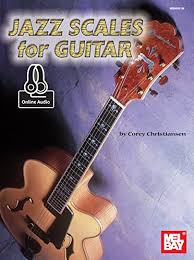 |
Jazz Scales For Guitar – Corey Christiansen (sheet music and TAB) |
| Jazz Scene. The – An Informal History from New Orleans to 1990 (W. Royal Stokes)(Book) |
 |
|
| Jazz Songs Anthology Of Jazz Songs – Gold Edition (Songbook) |
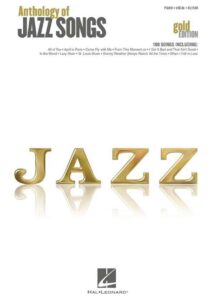 |
Jazz Songs Anthology Of Jazz Songs – Gold Edition (Songbook) |
| Jazz Songs For Kids For Easy Piano 25 Favorites With Practice Tips |
 |
|
| Jazz Standards – Blue Bossa Part 1 GUITAR (with tabs and MP3 audio backing tracks) |
 |
|
| Jazz Standards – Blue Bossa Part 2 GUITAR (with tabs and MP3 audio backing tracks) |
 |
|
| Jazz Standards (Keyboard, Guitar, Vocal) |
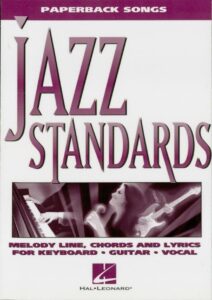 |
Jazz Standards (Songbook) Guitar Vocal |
| Jazz Standards 87 songs Piano Vocal guitar Chords |
 |
Jazz standards |
| Jazz Standards Beginning Solo Piano 8 Favorites |
 |
Jazz Standards Beginning Solo Piano 8 Favorites |
| Jazz Standards Easy Piano 84 Songs Budget Books |
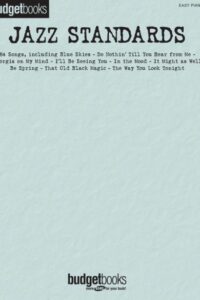 |
Jazz Standards Easy Piano 84 Songs Budget Books |
| Jazz Standards Fake Book – Real Jazz Standards Fake Book |
 |
Jazz Standards Fake Book – Real Jazz Standards Fake Book |
| Jazz Standards for Solo Guitar Robert B. Yelin |
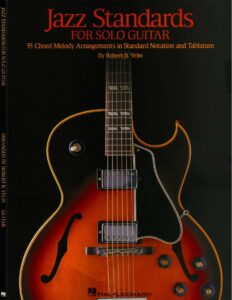 |
Guitar Jazz standards |
| Jazz Standards Fujii Eiichi |
 |
Jazz Standards Fujii Eiichi |
| Jazz Standards Jazz Piano Solos Series Volume 44 |
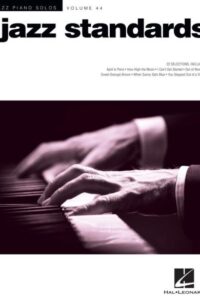 |
Jazz Standards Jazz Piano Solos Series Volume 44 |
| Jazz Standards Progressions Book Vol. III Chord changes with full Harmonic analysis |
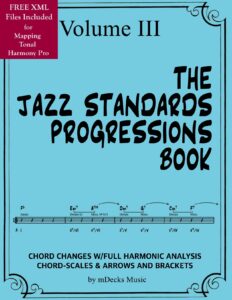 |
|
| Jazz Standards The Most Requested (75 songs) |
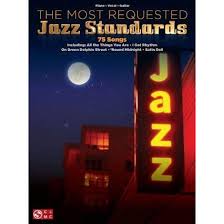 |
The Most Requested Jazz Standards |
| Jazz Standards, The Best Jazz Standards Ever 2nd Edition |
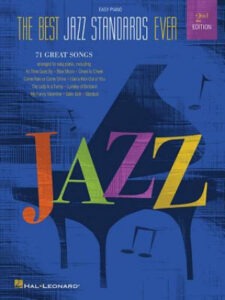 |
Jazz Standards, The Best Jazz Standards Ever 2nd Edition |
| Jazz Swing Fake Book |
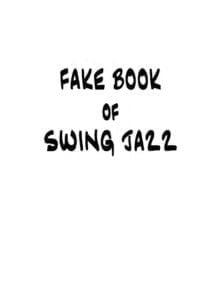 |
Jazz Swing Fake Book |
| Jazz Techniques – Improvising & Arranging University of Southampton, Hampshire, England | Jazz Techniques – Improvising & Arranging | |
| Jazz The Best Jazz Piano Solos Ever 80 Classics From Miles To Monk And More |
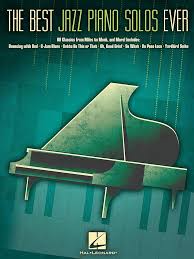 |
Jazz The Best Jazz Piano Solos Ever 80 Classics From Miles To Monk And More |
| Jazz The Definitive Jazz Collection 2nd Edition |
 |
Jazz The Definitive Jazz Collection 2nd Edition |
| Jazz The Great American Songbook Jazz Piano Vocal Guitar |
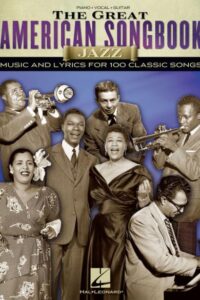 |
Jazz The Great American Songbook Jazz Piano Vocal Guitar Contents |
| Jazz The Jazzers Cookbook Creative Recipes For Players And Teachers (Book) |
 |
|
| Jazz Theory From Basic To Advanced Study by Dariusz Terefenko |
 |
|
| Jazz Treasures For Solo Guitar with TAB |
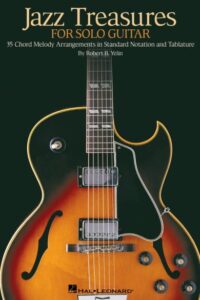 |
Jazz Treasures For Solo Guitar with TAB |
| Jazz Trumpet Solos Cuprins |
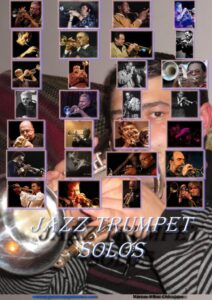 |
Jazz Trumpet Solos Cuprins |
| Jazz up your Christmas | Jazz up Christmas | |
| Jazz Violin by Stephane Grappelli and Matt Glaser (over 25 transcribed solos plus analysis and more) |
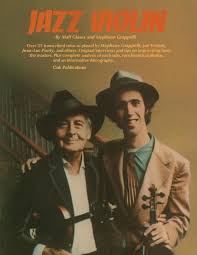 |
Jazz Violin by Stephane Grappelli and Matt Glaser (over 25 transcribed solos plus analysis and more) |
| Jazz Violin Studies by Usher Abell (Mel Bay) |
 |
|
| Jazz Vocabulary for Electric Bass by Janek Gwizdala |
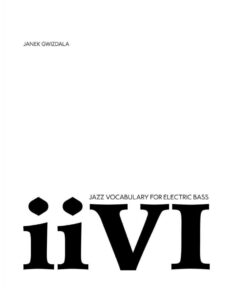 |
|
| Jazz Waltzes For Piano | Jazz Waltzes For Piano | |
| Jazz Works For Piano Volume 3 1988. |
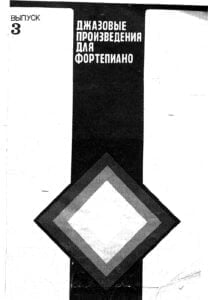 |
Jazz Works For Piano Volume 3 1988. |
| Jazz, Reading – A Gathering of Autobiography, Reportage, and Criticism from 1919 to Now (Robert Gottlieb)(Book) |
 |
|
| Jazzical Guitar Classical Favorites Played In Jazz Style Tablature |
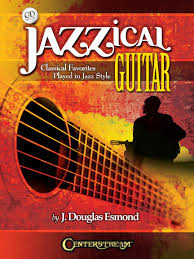 |
Jazzical Guitar Classical Favorites Played In Jazz Style_removed |
| Jazzin about Fun pieces for Trombone and piano by Pamela Wedgwood |
 |
Jazzin about Fun pieces for Trombone and piano by Pamela Wedgwood Contents |
| Jazzin’ The Blues A complete guide to learning jazz-blues Guitar by John Ganapes and David Roos |
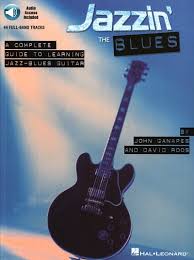 |
|
| Jazzology by Robert Rawlins The Encyclopedia of JAZZ THEORY for all Musicians |
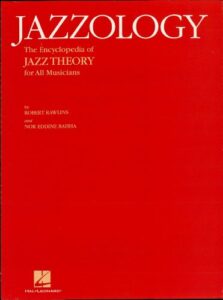 |
Jazzology by Robert Rawlins The Encyclopedia of JAZZ THEORY for all Musicians |
| Jazzy Christmas for Guitar with TABs |
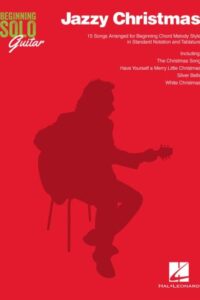 |
Jazzy Christmas for Guitar with TABs |
| Jazzy Christmas Tunes Piano Solo 10 spicy settings by Crag Curry |
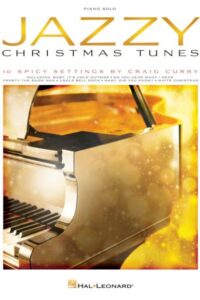 |
Jazzy Christmas Tunes Piano Solo 10 spicy settings by Crag Curry |
| Jazzy Jingles Holiday Solos (Christmas piano solos) For Early Intermediate By Jennifer Eklund |
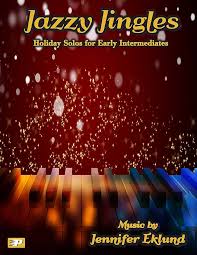 |
Jazzy Jingles Holiday Solos (Christmas piano solos) For Early Intermediate By Jennifer Eklund |
| Jazzy Yesterday (Musescore File).mscz | ||
| Je me souviens (Lara Fabian) | ||
| Je suis malade (Lara Fabian – Dalidà) | ||
| Je suis mon coeur (Lara Fabian) | ||
| Je t’aime (Lara Fabian) | ||
| Je T’aime Moi Non Plus (Musescore File).mscz | ||
| Je Te Veux – Erik Satie (Musescore File).mscz | ||
| Jean Jacques Goldman – Aicha | ||
| Jean Marc Viallet Canigou |
 |
|
| Jean Michel Jarre Song Book Volume 1 |
 |
Jean Michel Jarre Song Book Volume 1 |
| Jean Michel Jarre Song Book Volume 2 |
 |
Jean Michel Jarre Song Book Volume 2 |
| Jean Michel Jarre Songbook (Jean Michel Jarre) |
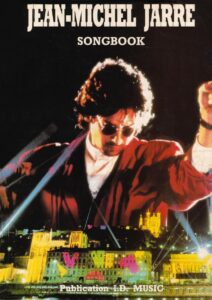 |
Jean Michel Jarre Songbook (Jean Michel Jarre) |
| Jean Schwartz, Sam M. Lewis and Joe Young – I’m All Bound ‘Round with the Mason Dixon Line |
 |
|
| Jean Schwartz, William Jerome and Ray Goetz – I’m Simply crazy Over You |
 |
|
| Jean-Michel Jarre The Concert in China Arpegiator Arpegiateur.mscz | ||
| Jeanne’s Death – Modigliani OST (Guy Farley) | ||
| Jeff Beck – Wired Guitar Recorded Versions with TABlature |
 |
Jeff Beck – Wired Guitar Recorded Versions with TABlature |
| Jeff Beck Best of Beck Recorded guitar Versions with TAB |
 |
Jeff Beck Best of Beck Recorded guitar Versions with TAB |
| Jeff Beck Blow by Blow Recorded guitar Versions with TAB |
 |
Jeff Beck Blow by Blow Recorded guitar Versions with TAB |
| Jeff Beck Guitar Signature Licks with Tablature |
 |
Jeff Beck Guitar Signature Licks with Tablature |
| Jeff Beck In Session With Jeff Beck Book + Audio MP3 Embedded Tracks With Tablature |
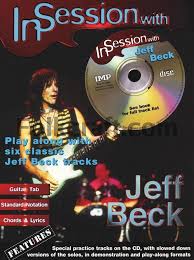 |
Jeff Beck In Session With Jeff Beck Book + Audio MP3 Embedded Tracks With Tablature |
| Jeff Buckley – Hallelujah | ||
| Jeff Buckley Collecition Grace Guitar TABlature |
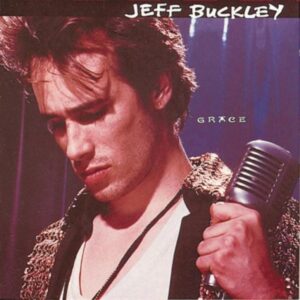 |
Jeff Buckley Collecition Grace Guitar TABlature |
| Jeff Coffin 10 Improvisational Alto Sax Etudes |
 |
|
| Jeff Coffin 10 Improvisational Clarinet Etudes |
 |
|
| Jeff Coffin 10 Improvisational Tenor Sax Etudes |
 |
|
| Jeff Coffin The Saxophone Book Book 1 |
 |
|
| Jeff Coffin The Saxophone Book Book 2 |
 |
|
| Jeff Coffin The Saxophone Book Book 3 |
 |
|
| Jeff Gardner – Blues Book (Piano) |
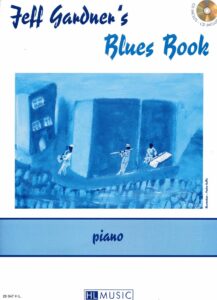 |
|
| Jeff Gardner 12 Easy Jazz Preludes For Piano with MP3 audio tracks to play along |
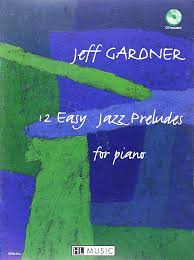 |
Jeff Gardner 12 Easy Jazz Preludes For Piano |
| Jeff Gardner Jazz Preludes Vol. 1 Nos. 1-12 |
 |
|
| Jeff Loomis Plains Of Oblivion Requiem For The Living Guitar Tabs |
 |
|
| Jeff Wayne War Of The Worlds Music, The Musical version (Vintage sheet music 1978) |
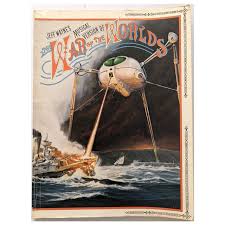 |
Jeff Wayne War Of The Worlds Music, The Musical version (Vintage sheet music 1978) |
| Jeffrey Osborne – On The Wings Of Love | ||
| Jelly Roll Morton Blues and Stomps (Book 1) Vintage sheet music |
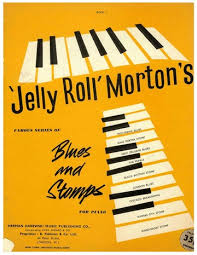 |
Jelly Roll Morton Blues and Stomps |
| Jelly Roll Morton Blues, Stomps and Ragtime (Piano) |
 |
jelly roll morton sheet music |
| Jelly Roll Morton Jelly Roll Blues Original Jelly Roll Vintage sheet music |
 |
|
| Jelly Roll Morton Piano Roll Transcription |
 |
jelly roll morton sheet music book |
| Jelly Roll Morton The Best Of Jelly Roll Morton Piano Solo |
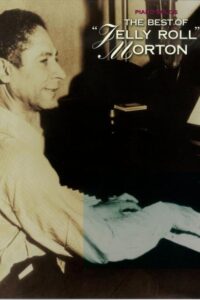 |
Jelly Roll Morton The Best Of Jelly Roll Morton Piano Solo |
| Jelly Roll Morton The Collected Piano Music |
 |
Jelly Roll Morton The Collected Piano Music |
| Jenifer Cook Oh How I Love Jesus Piano American Melody |
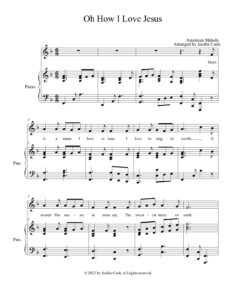 |
|
| Jennifer Linn Footprints in the Snow HLSPL Showcase Solos NFMC 2014-2016 Selection Late Elementary – Level 3 PDF |
 |
|
| Jennifer Linn Journey Through The Classics Book 1 Elementary Piano Repertoire |
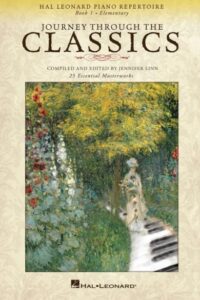 |
Journey Through The Classics Book 1 Elementary |
| Jennifer Linn Journey Through The Classics Book 2 Late Elementary Piano Repertoire |
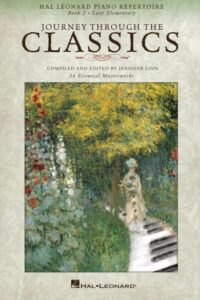 |
Journey Through The Classics Book 2 Late Elementary |
| Jennifer Linn Journey Through The Classics Book 3 Early Intermediate Piano Repertoire |
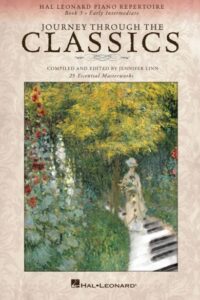 |
Journey Through The Classics Book 3 Early Intermediate |
| Jennifer Linn Journey Through The Classics Book 4 Intermediate Piano Repertoire |
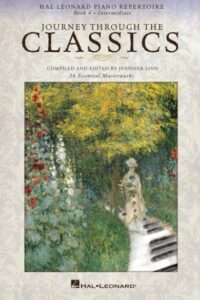 |
Journey Through The Classics Book 4 Intermediate |
| Jennifer Linn Les Petites Impressions Intermediate Level Composer Showcase Pdf |
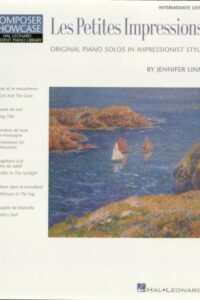 |
Jennifer Linn Les Petites Impressions Intermediate Level Composer Showcase Pdf |
| Jennifer Lopez – Alive | ||
| Jeremy Cullen – Waltz on a Theme by Alban Berg | Jeremy Cullen – Waltz on a Theme by Alban Berg | |
| Jeremy Monteiro Late-Night Thoughts of a Jazz Musician (Jeremy Monteiro) Book |
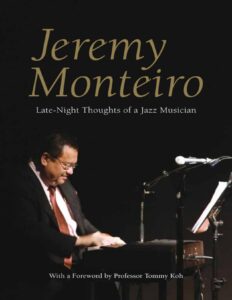 |
|
| Jeremy Siskind Bye Bye Blackbird by Ray Henderson |
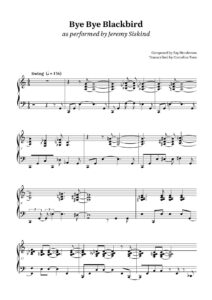 |
|
| Jeremy Siskind Jazz Piano Fundamentals (Books 1-3) Complete Jazz Piano Curriculum Explanations, Exercises, Listening Guides, and Practice Plans |
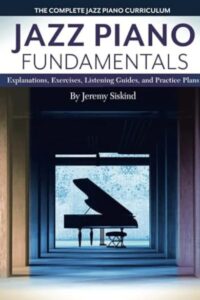 |
|
| Jeremy Sisking Playing Solo Jazz Piano A New Approach For Creative Pianists 2nd Edition |
 |
|
| Jerome Kern & Oscar Hammerstein All The Things You Are | Jerome Kern & Oscar Hammerstein All The Things You Are | |
| Jerome Kern and Anne Caldwell Whose Baby are You – (Piano Vocal sheet music) |
 |
|
| Jerome Kern Collection 2nd Edition Piano Vocal Guitar Chords |
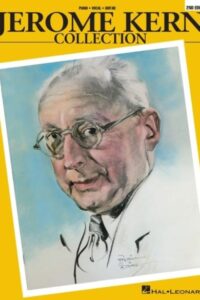 |
Jerome Kern Collection 2nd Edition Piano Vocal Guitar Chords |
| Jerome Kern The Way You Look Tonight | Jerome Kern The Way You Look Tonight | |
| Jerry Bergonzi Jerry Bergonzi Solos Setting Standards (by Miles Osland) |
 |
|
| Jerry Bergonzi – Just Friends (Re-Harmonized) Lead Sheet.mscz | ||
| Jerry Bergonzi – Re-Harmonization of Jazz Standards |
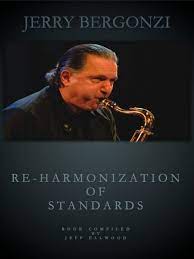 |
Jerry Bergonzi – Re-Harmonization of Jazz Standards |
| Jerry Bergonzi – Improvisation Series (complete) with audio MP3 Vol. 1 to 5 (with MP3 audio tracks) |
 |
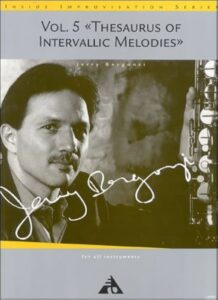 |
| Jerry Bergonzi – Inside Improvisation Vol.6 Developing A Jazz Language with MP3 audio tracks |
 |
Jerry Bergonzi – Inside Improvisation Vol.6 Developing A Jazz Language |
| Jerry Bergonzi – Inside Improvisation Vol.7 Series Hexatonics with MP3 audio tracks |
 |
Jerry Bergonzi – Inside Improvisation Vol.7 Series Hexatonics_compressed |
| Jerry Bergonzi – The Music of Jerry Bergonzi all compositions (for C instruments) |
 |
Jerry Bergonzi – The Music of Jerry Bergonzi all compositions (for C instruments) |
| Jerry Bergonzi The Music Of Jerry Bergonzi For Bb Instruments |
 |
Jerry Bergonzi The Music Of Jerry Bergonzi For Bb Instruments |
| Jerry Bergonzy – Scale Motives Or Modal Sequences (Vol. 6) (Musescore File).mscz | ||
| Jerry Bergonzy – Scale Motives Or Modal Sequences (Vol. 6) Part 2 (Musescore File).mscz | ||
| Jerry Cammack – TOM and JERRY RAG |
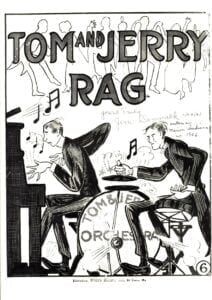 |
|
| Jerry Cocker – Hearing the changes (book) |
 |
|
| Jerry Cocker – Paterns For Jazz |
 |
 Jerry Cocker – Paterns For Jazz Jerry Cocker – Paterns For Jazz |
| Jerry Coker Complete Method for Jazz Improvisation (Play Along Book with audio MP3) |
 |
Jerry Coker – The Complete Method for Improvisation |
| Jerry Coker Elements of the JAZZ language for the developing improvisor |
 |
|
| Jerry Coker Improvising Jazz |
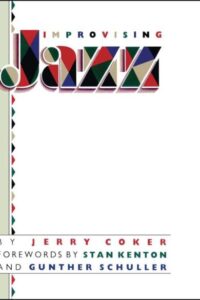 |
|
| Jerry Coker Jazz Patterns – by Jerry Coker Jimmy Casale Gary Campbell Jerry Greene |
 |
Jazz Patterns |
| Jerry Coker’s Jazz Keyboard – For Pianists and Non-Pianists |
 |
Jerry Coker’s Jazz keyboard |
| Jerry Goldsmith The Omen Ave Satani |
 |
|
| Jerry Goldsmith – Alien (piano sheet music) |
 |
|
| Jerry Goldsmith – Papillon (Piano) |
 |
|
| Jerry Goldsmith – Poltergeist (piano) |
 |
|
| Jerry Goldsmith – Star Trek – First Contact (Piano solo) | Jerry Goldsmith – Star Trek – First Contact (Piano solo) | |
| Jerry Goldsmith – The Pipers Dreams (The Omen) sheet music pdf | GOLDSMITH THE PIPER DREAMS THE OMEN SHEET MUSIC PDF | |
| Jerry Goldsmith Basic Instinct – Main Theme |
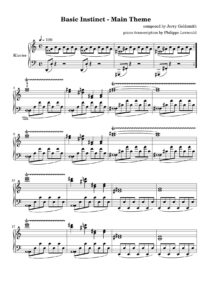 |
|
| Jerry Goldsmith Chinatown Love Theme (Jake And Evelyn) |
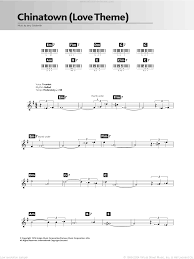 |
|
| Jerry Goldsmith Chinatown Love Theme (Guitar chords) |
 |
|
| Jerry Goldsmith First Blood It’s a long road piano solo |
 |
|
| Jerry Goldsmith Star Trek The Motion Picture Main Theme (1979) | Jerry Goldsmith 1979 Star Trek The Motion Picture 01 Theme | |
| Jerry Goldsmith Star Trek The Motion Picture The Enterprise arr. for duet two pianos | Jerry Goldsmith Star Trek The Motion Picture The Enterprise arr. for two pianos | |
| Jerry Goldsmith Star Trek Theme piano solo arrangement |
 |
|
| Jerry Goldsmith The Mummy Imhotep | Jerry Goldsmith The Mummy Imhotep | |
| Jerry Goldsmith The Omen – The Piper Dreams – Jerry Goldsmith Sheet Music Pdf |
 |
|
| Jerry Goldsmith The Russia House Katya Jerry Goldsmith piano solo |
 |
|
| Jerry Herman La Cage Aux Folles (Musical) Vocal Piano Score The Broadway Musical |
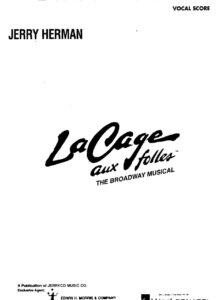 |
Jerry Herman La Cage Aux Folles (Musical) Vocal Piano Score The Broadway Musical |
| Jerry Lee Lewis – Great Balls Of Fire Sheet Music |
 |
 |
| Jerry Lee Lewis Great Balls Of Fire Vocal Piano |
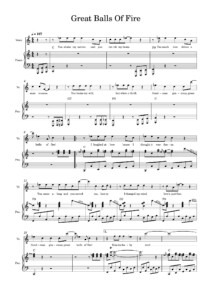 |
|
| Jerry Lee Lewis Roll Over Jerry! | Jerry Lee Lewis Roll Over Jerry! | |
| Jerry Reed Jerrys Breakdown Guitar Tablature | Jerry Reed Jerry’s Breakdown Guitar Tablature | |
| Jerry Reed Heavy Neckin Transcribed By John Knowles Guitar TAB |
 |
Jerry Reed Heavy Neckin Transcribed By John Knowles Guitar TAB |
| Jerry Reed The Claw Guitar Tablature |
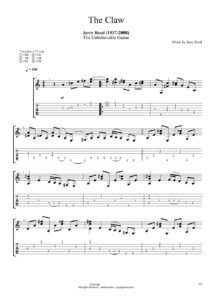 |
|
| Jerry Snyder Guitar Ragtime |
 |
Jerry Snyder Guitar Ragtime |
| Jersey Boys The Musical |
 |
|
| Jesper Kyd – Ezio’s Family (Assassins Creed) |
 |
|
| Jesper Kyd – Ezio’s Family (Musescore File).mscz | ||
| Jesu Joy Of Man’s Desiring (Musescore File).mscz | ||
| Jesus Christ Superstar The Making Of A Modern Gospel by Robert M. Price (Book) |
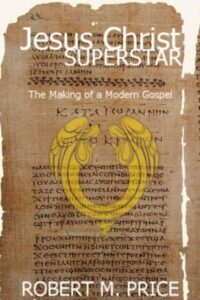 |
|
| Jet Get Born Guitar Songbook with Tablature |
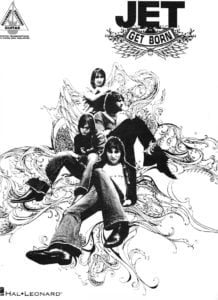 |
Jet Get Born Guitar Songbook |
| Jethro Tull by Raymond Benson Book |
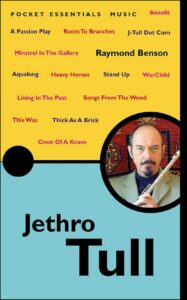 |
